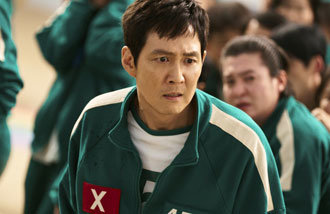Year of the dog: Dogs look back at humans in their eyes
Year of the dog: Dogs look back at humans in their eyes
Posted January. 01, 2018 07:28,
Updated January. 01, 2018 08:04
When human beings look at dogs, dogs also look back at humans in their eyes. A recent study suggests that this is not just sharing feelings with pets but an important incident that created the humans today. For the “Year of the Dog” of 2018, I have looked into the history of humans and dogs.
“Why did the Neanderthals become extinct and how could modern humans have survived?” is an age long question of anthropology. “The Invaders” written by Pat Shipman picks out “the alliance between humans and dogs” as the answer. According to the book, modern humans, who arrived at the Eurasia continent about 50,000 years ago, competed with the Neanderthals, hunting the same animals. However, modern humans were able to win the competition as they hunted more diverse animals and succeeded hunting dramatically by domesticating wolves as “wolf-dogs (primitive dogs)” at least 36,000 years ago.
For a long period of time, domesticated dogs have been the symbol of loyalty. In the “Odyssey,” Homer's epic from Greek mythology, the aged dog “Argos” was the only being that recognized Odysseus when he came back from the long trip. The “Dog of Osu,” which is a Korean story about a dog that saved its owner amidst the fire in Imsil, North Jeolla Province, is also famous. I have looked into the story of dogs in the Korean culture based on an academic lecture held by the National Folk Museum of Korea.
According to director Cheon Jin-ki of the National Folk Museum, dogs were recognized as an animal that connected this world and the afterworld. This thought is broadly distributed in Central Asia. Altai shaman believes that one would meet a dog at the gate to hell when moving on to the afterlife.
In the past, abnormal acts of dogs were thought to be a prediction of the future. “A white dog went up to the fence of the palace in February at the 53rd year of King Jinpyeong of Silla Dynasty. The king found out about the conspiracy of Ison and Ason in May,” is stated in the Silla part of the “Chronicles of the Three States.” The white dog’s action was seen as hinting a rebellion.
“A dog that looks like a wild deer came to the river bank of Sabisung, capital of Baekje, and barked towards the palace, and disappeared suddenly,” is also written at the Baekje part of the chronicles. Ancestors thought that a misfortune would take place or a family would perish when a dog goes on top of a roof.
There are numerous old drawings of dogs as well. Jiknyeo is standing with a dog in the Goguryeo Deukheung-ri ancient tomb mural featuring the two love stars, Gyeonwoo and Jiknyeo, and there are also dogs that look loyal in Muyeongchong and Gakjeochong mural paintings. The Silla clay dolls of dog have diverse appearance.
Dogs were also frequently painted during the Joseon Dynasty. A dog under a tree in a painting means dog “looking after the house well and preventing thieves.”
White colored dogs were thought to defeat epidemics, goblins and demons, bring good news to households, not to mention alarm disasters. Yellow colored dogs were kept in rural households as they were believed to symbolize good harvest and fecundity.
Jong-Yeob JO jjj@donga.com







